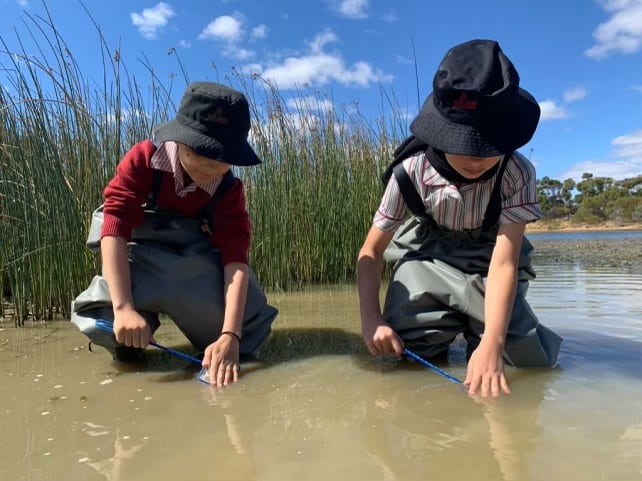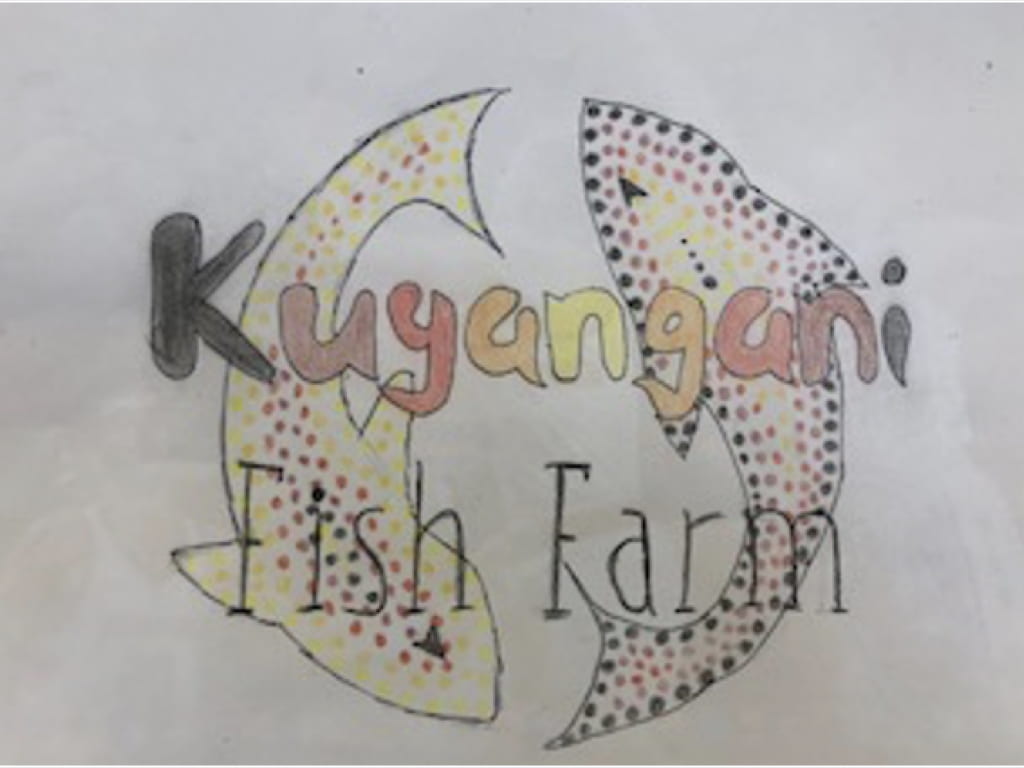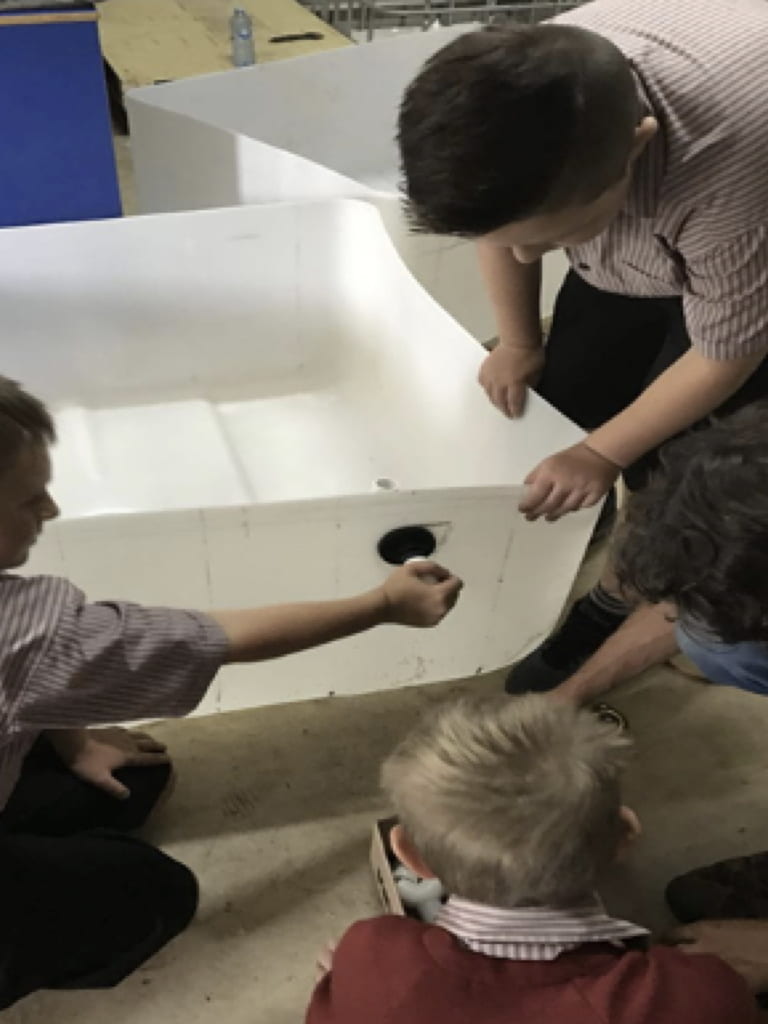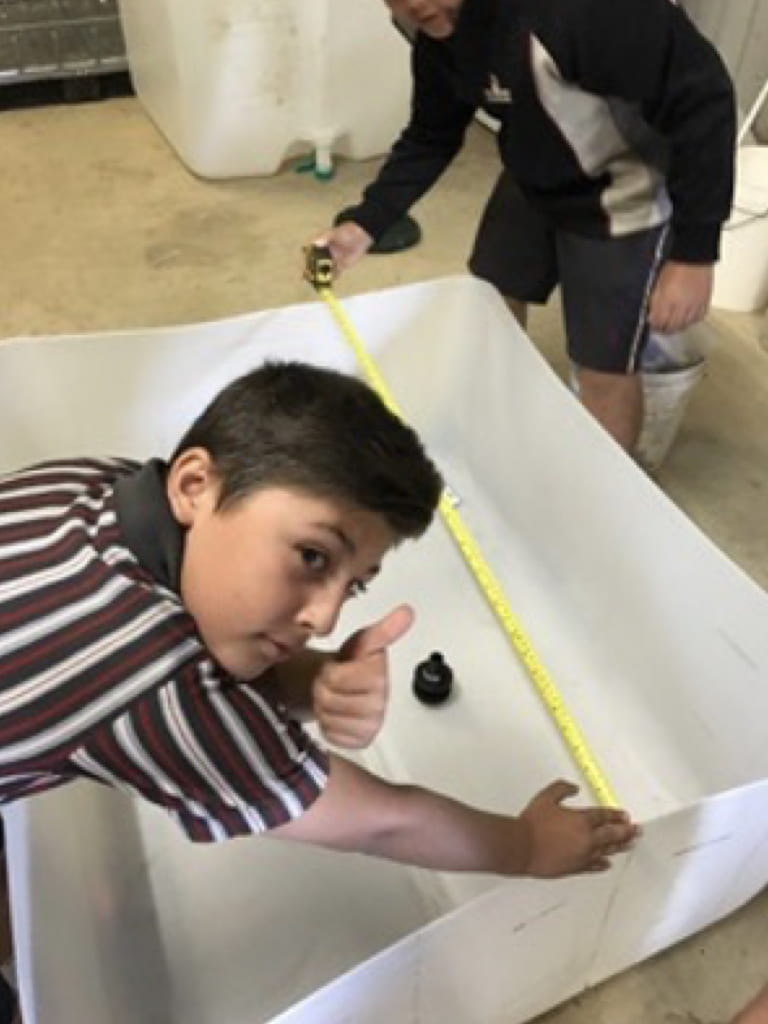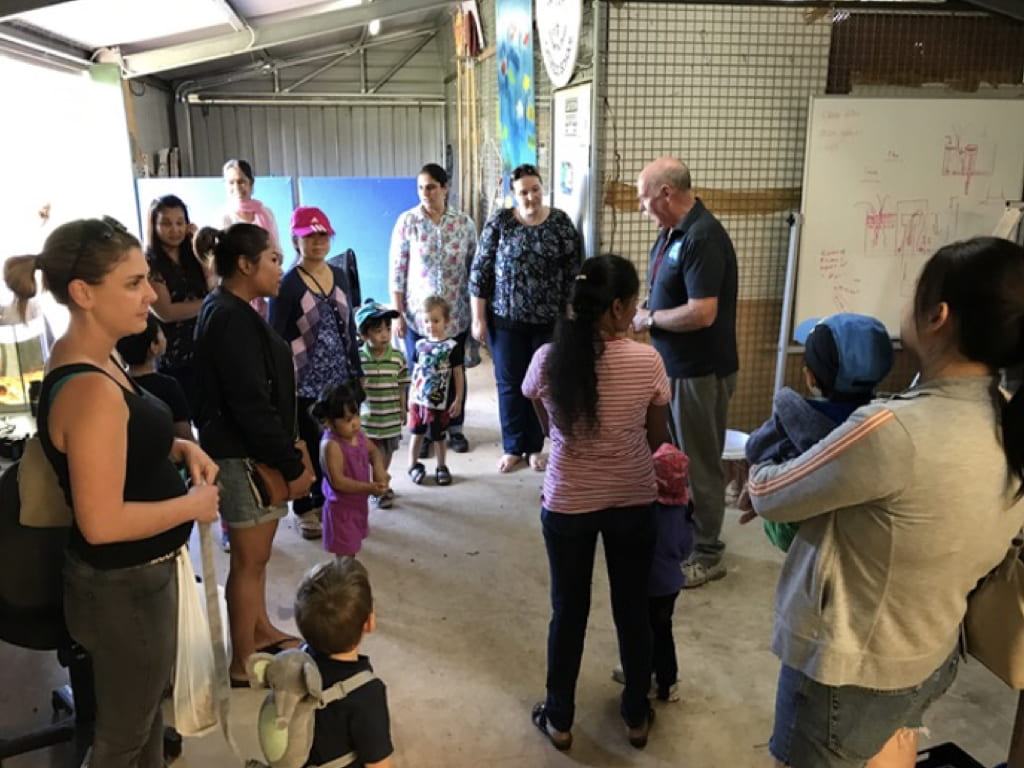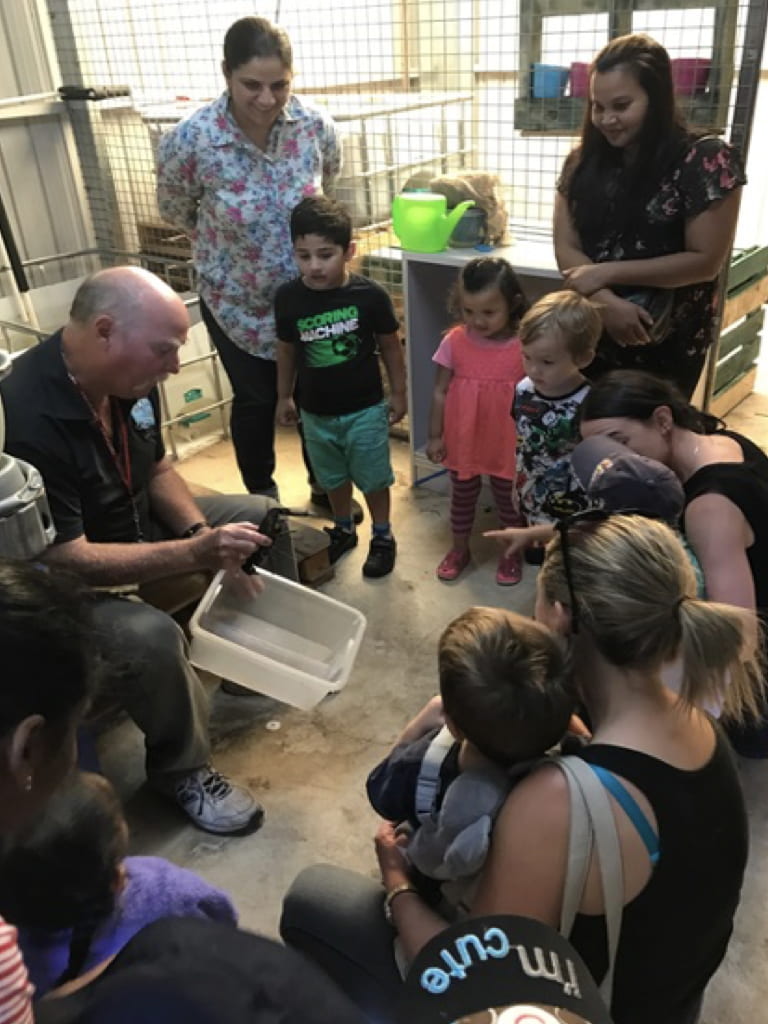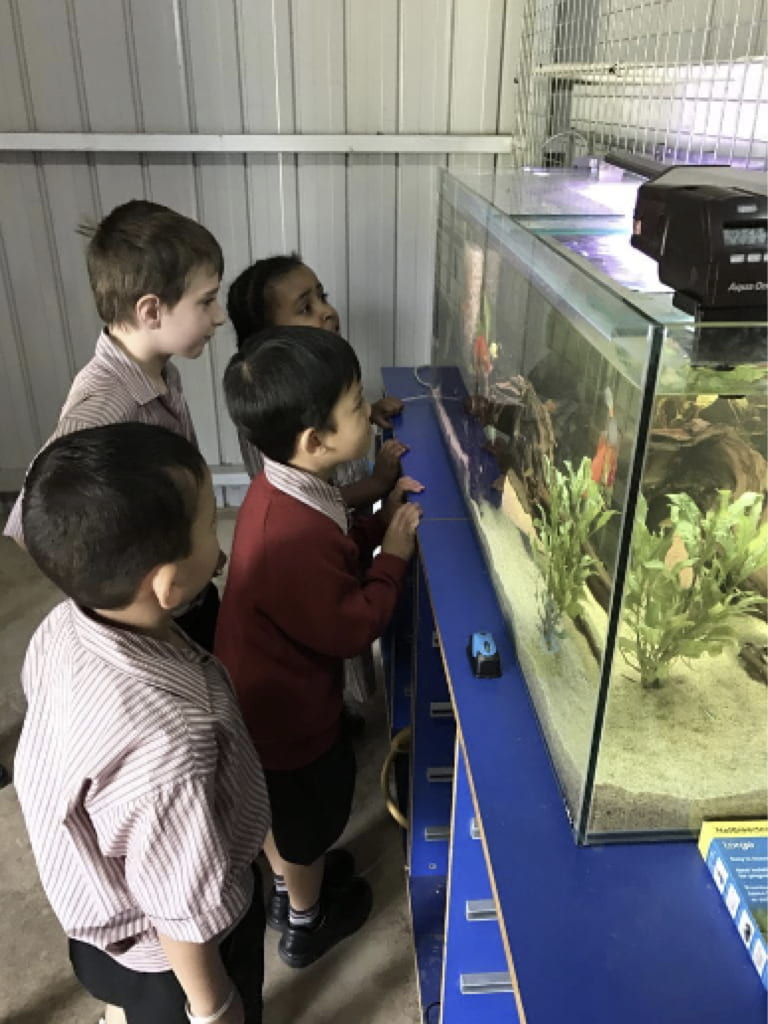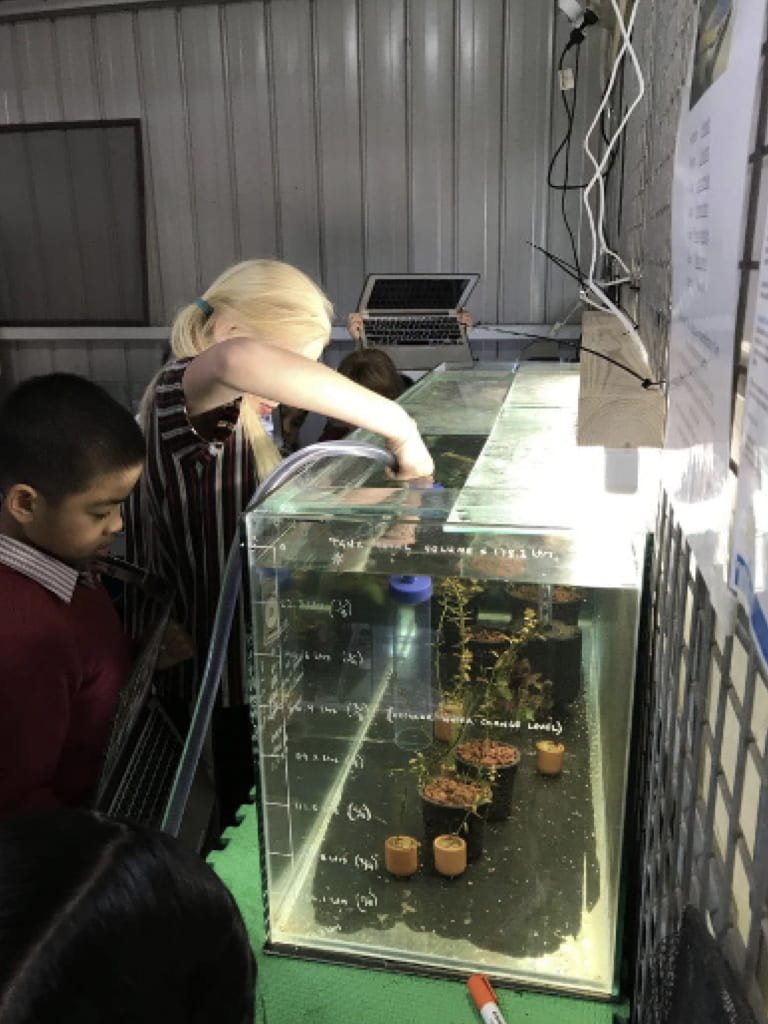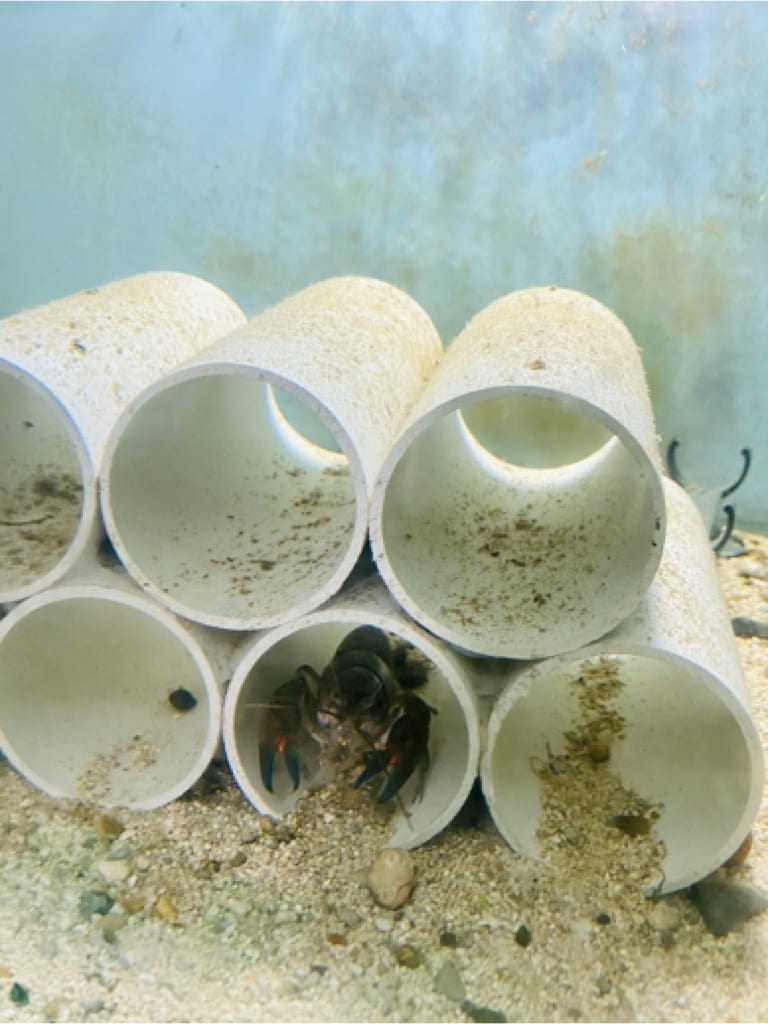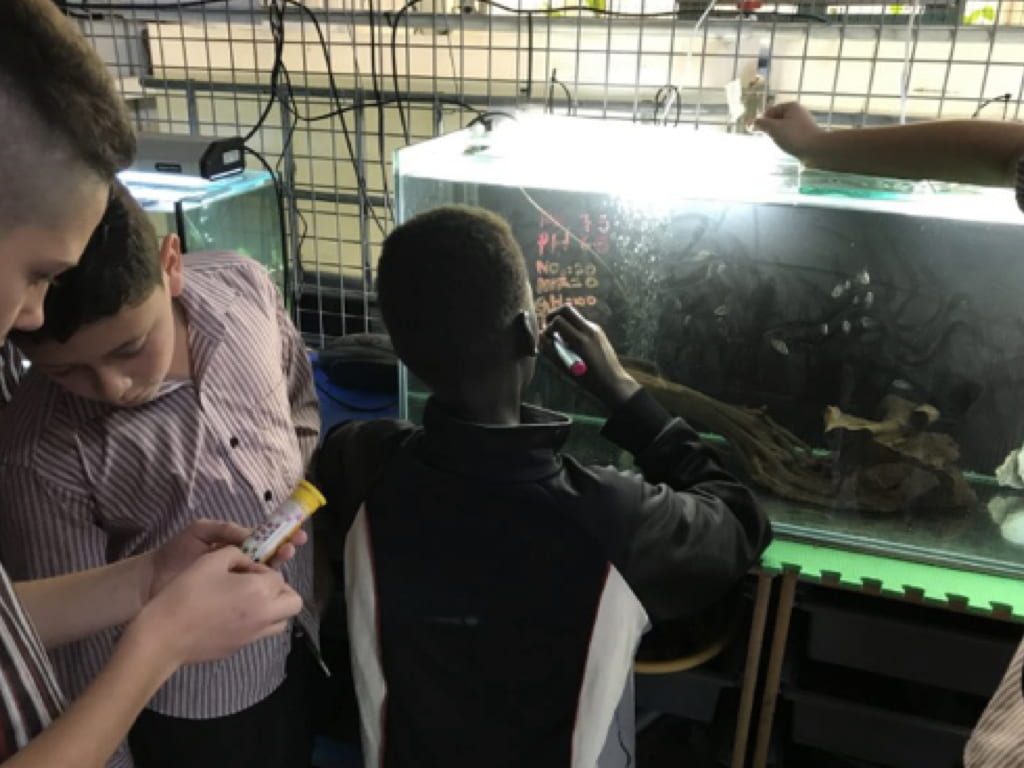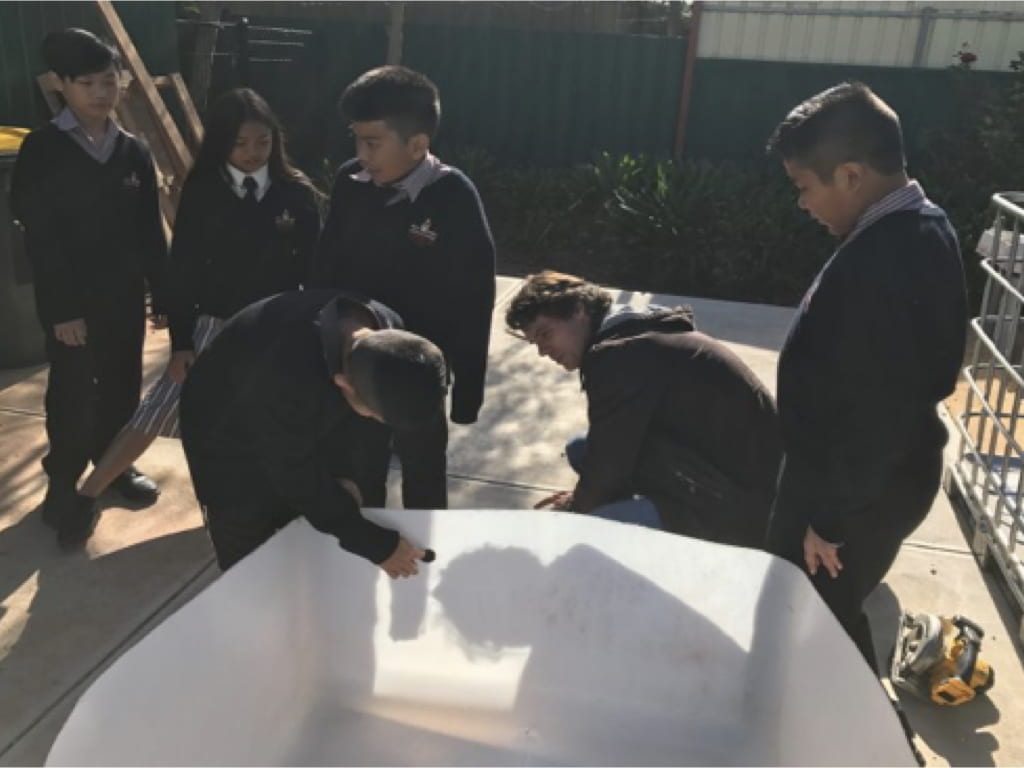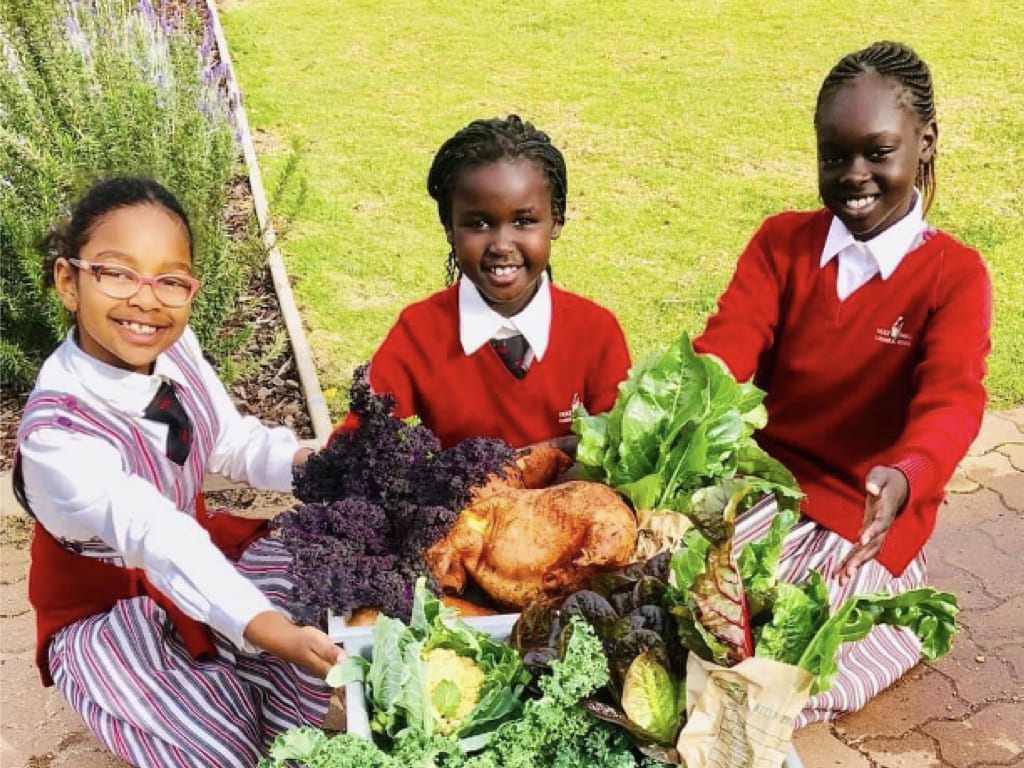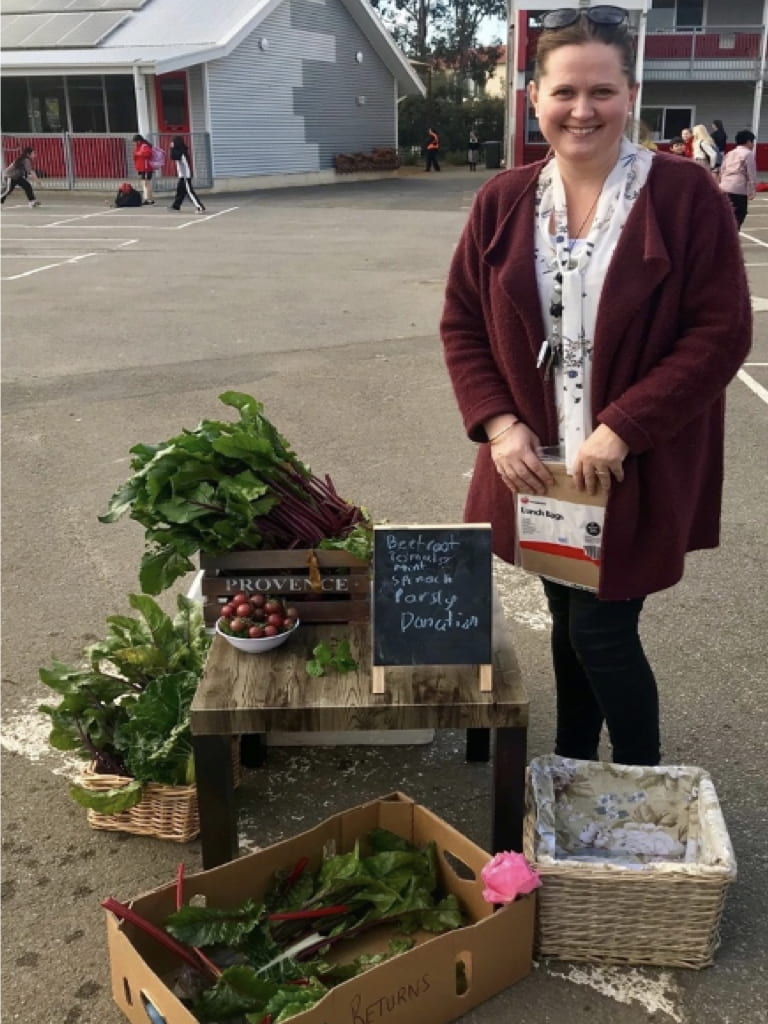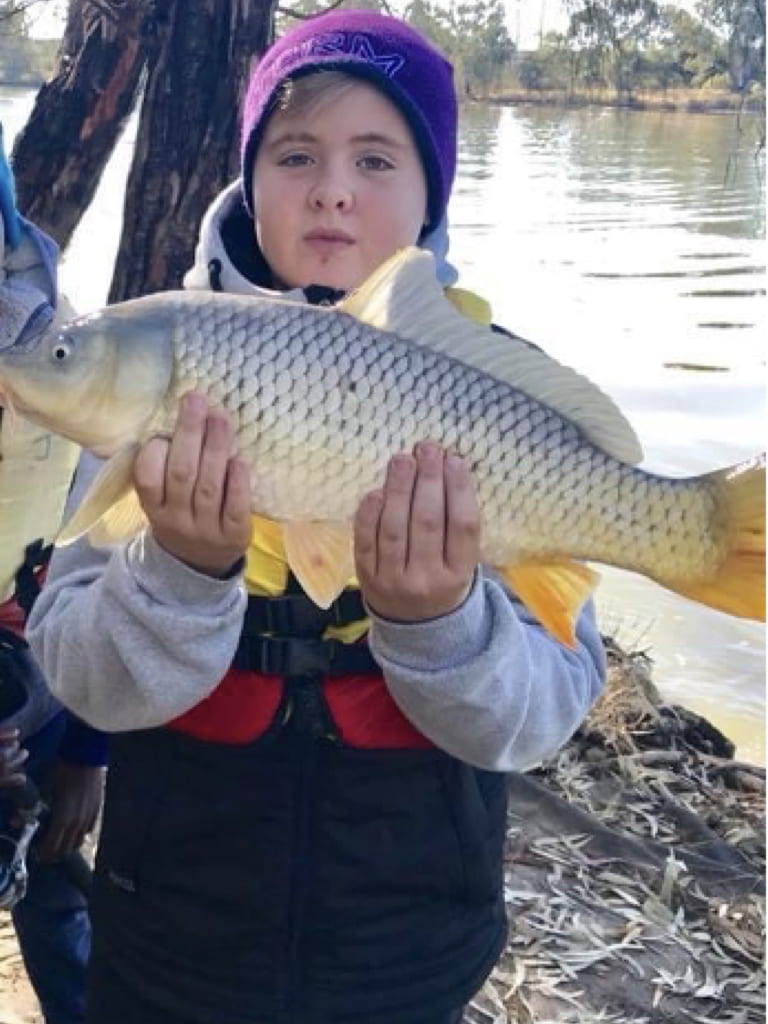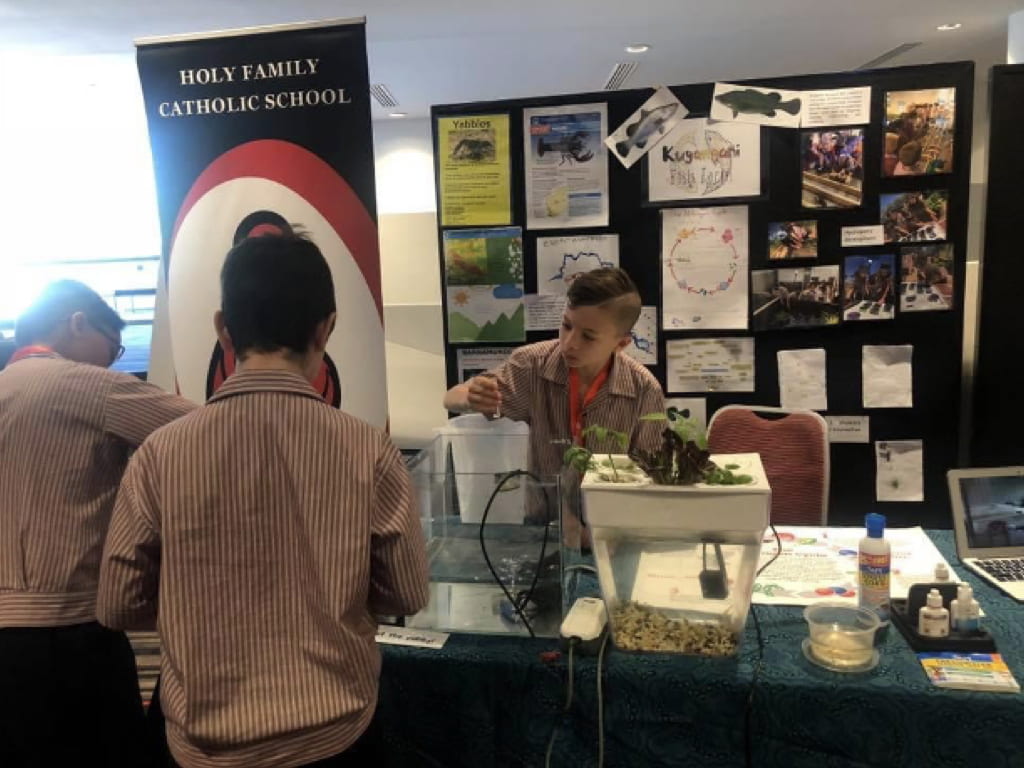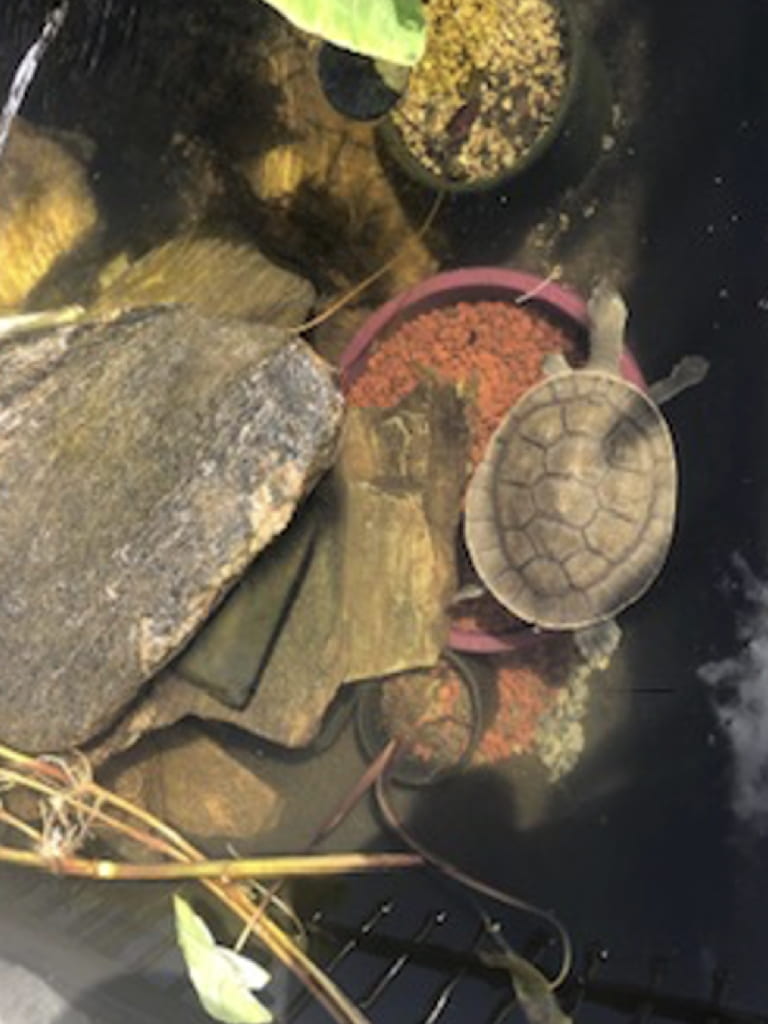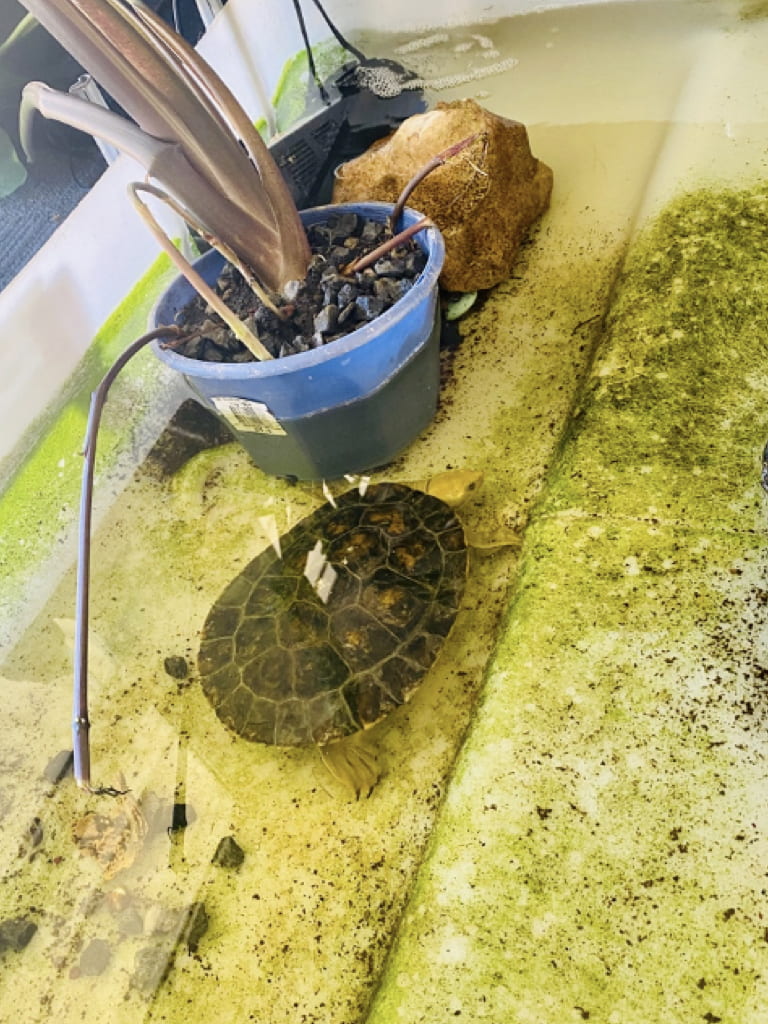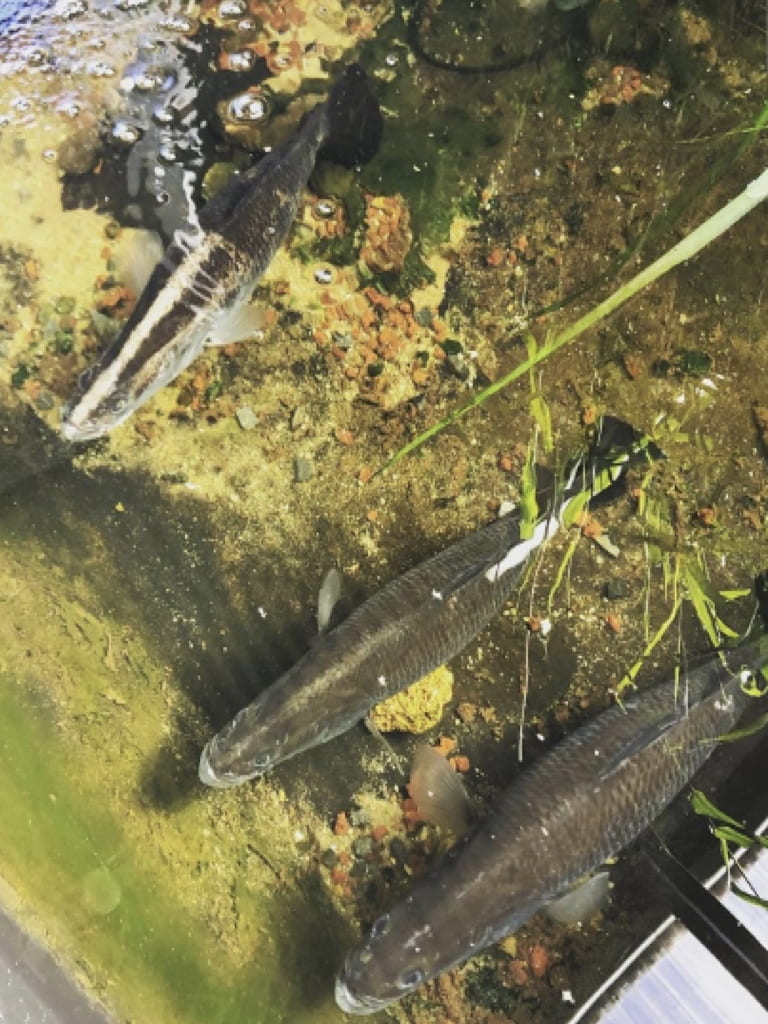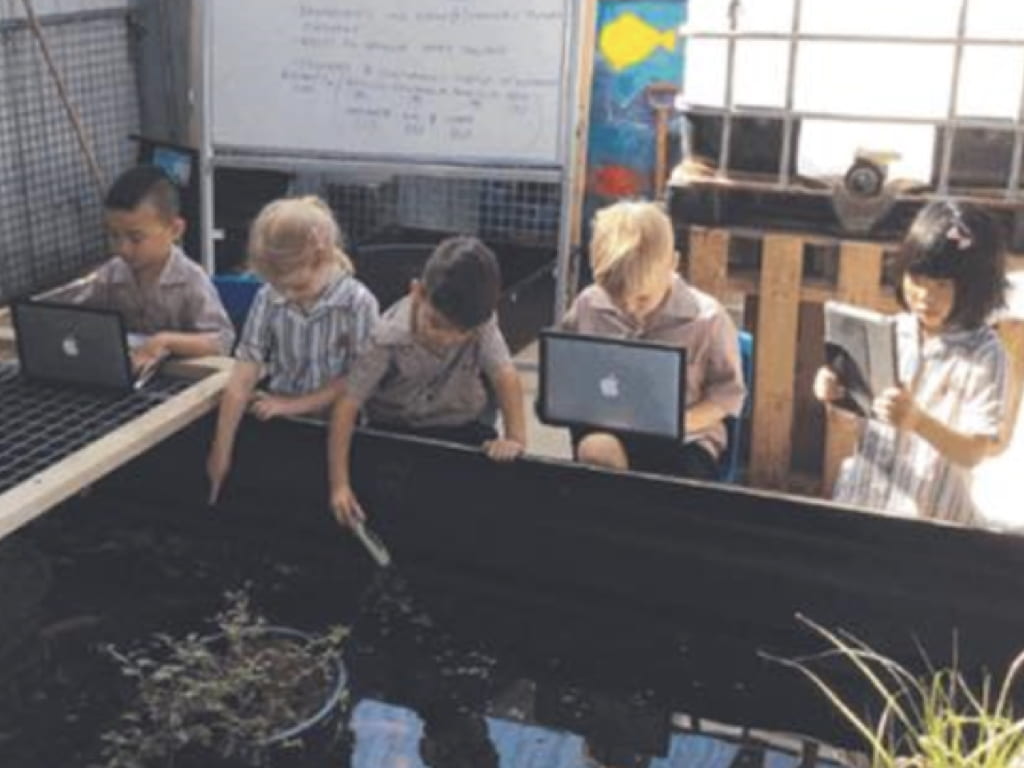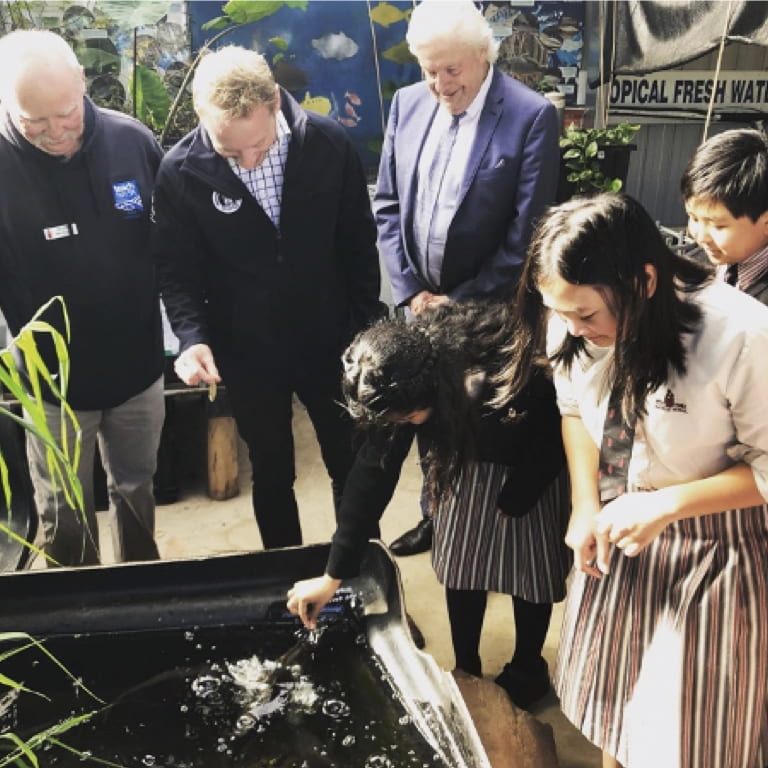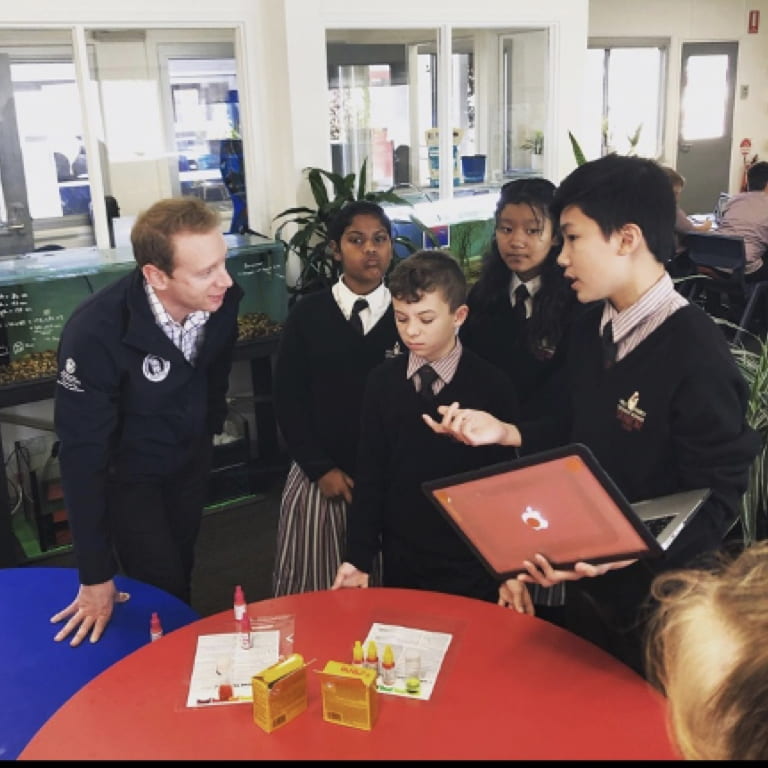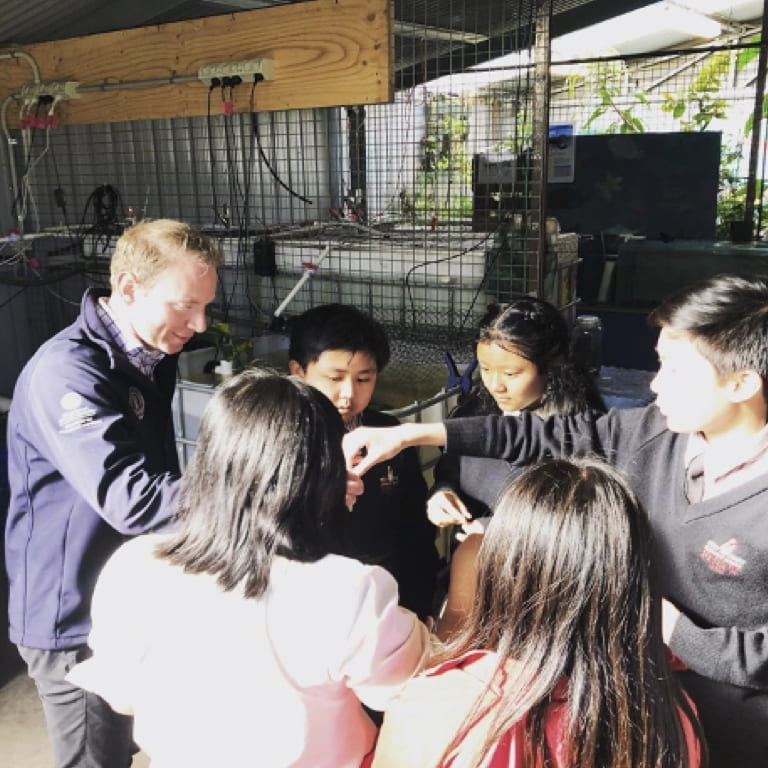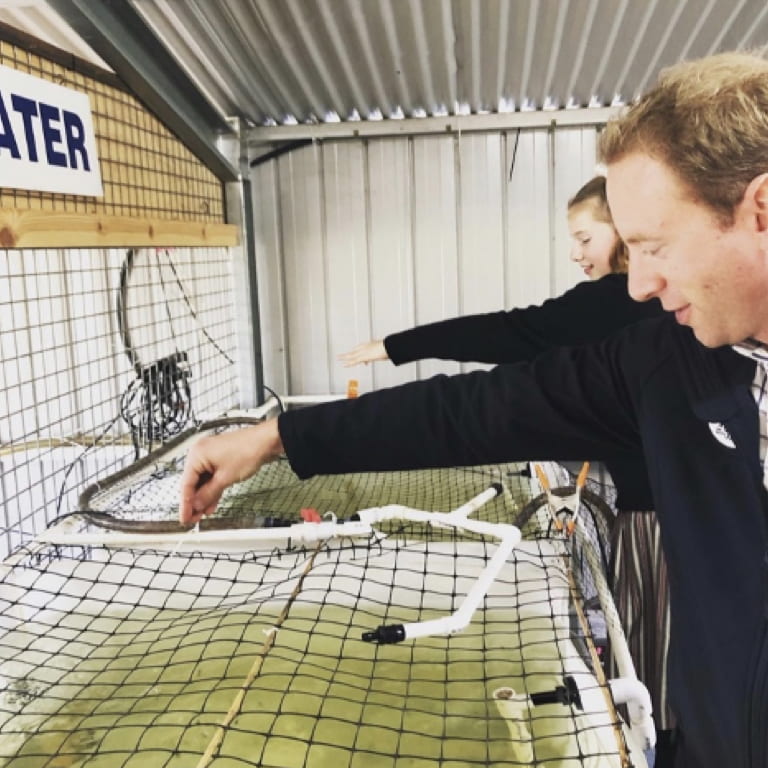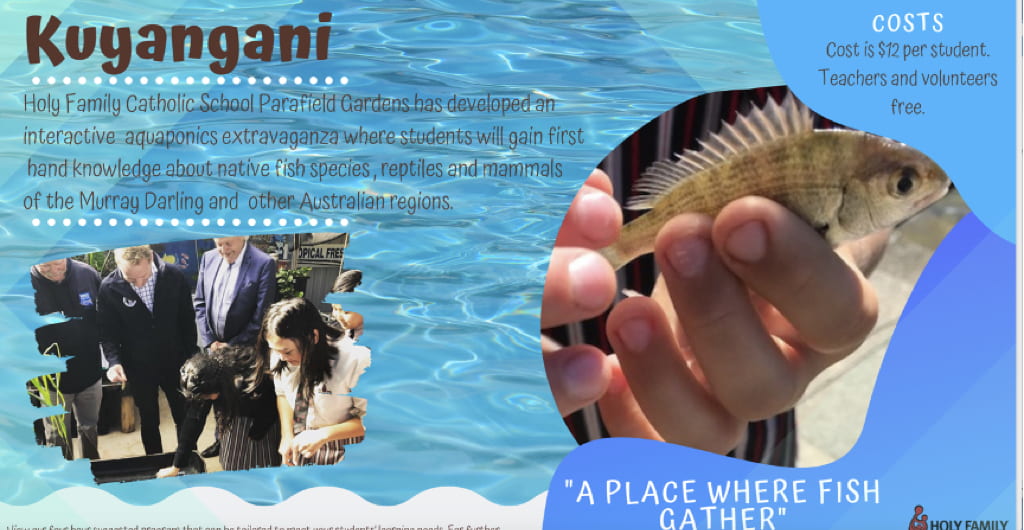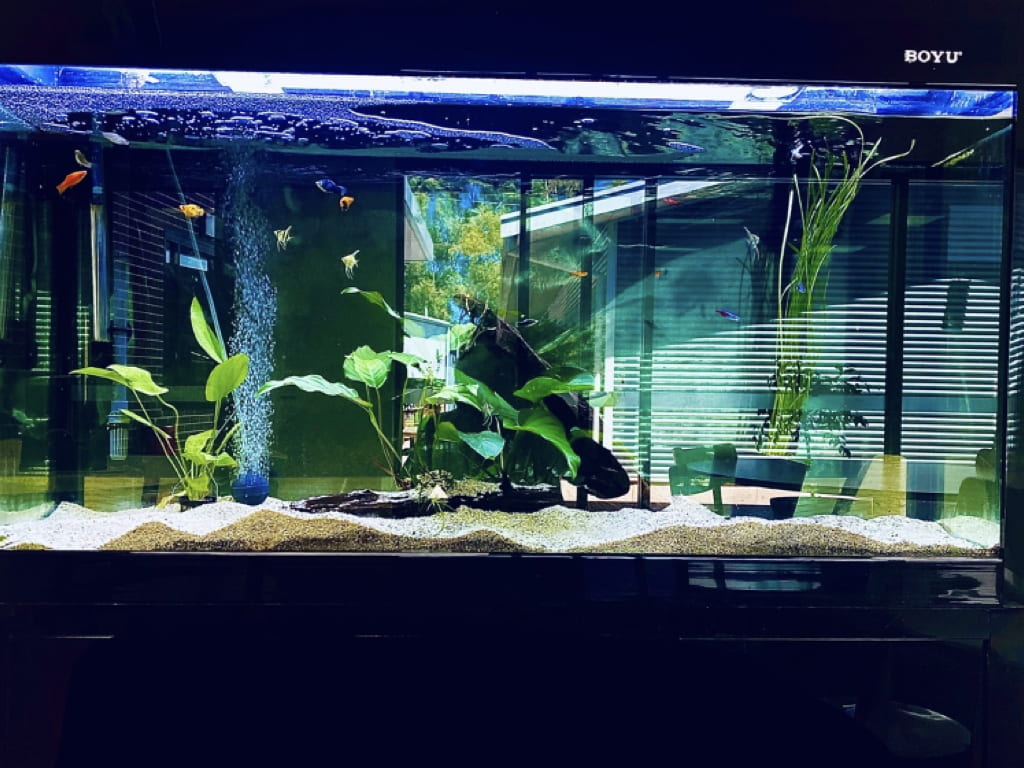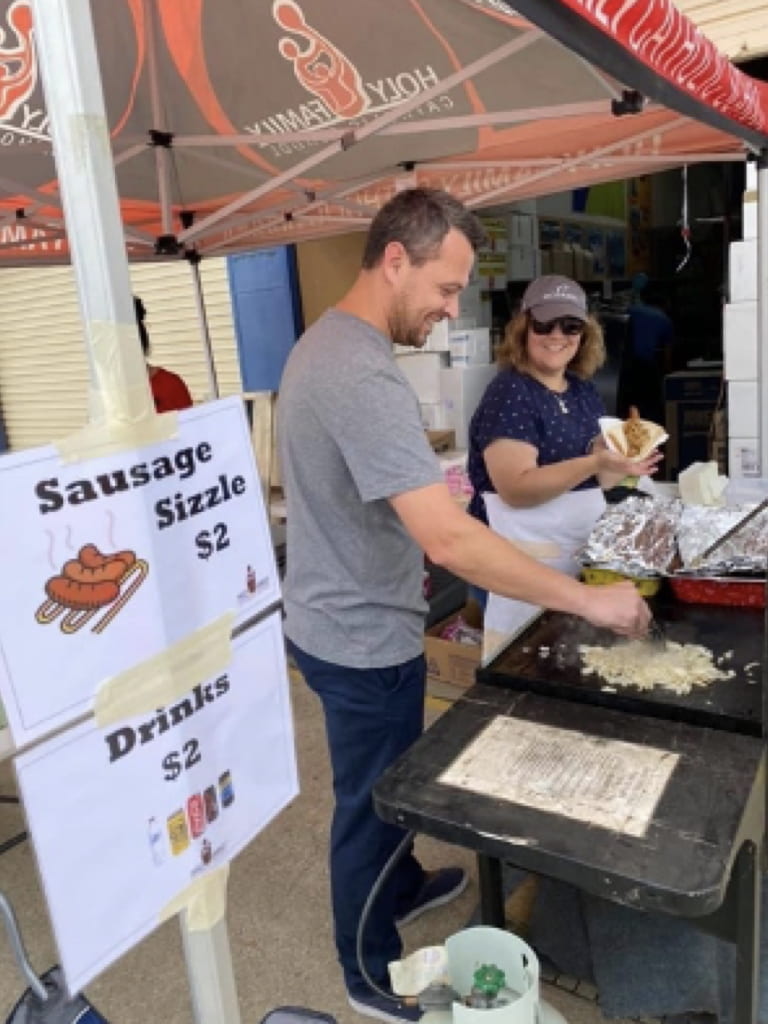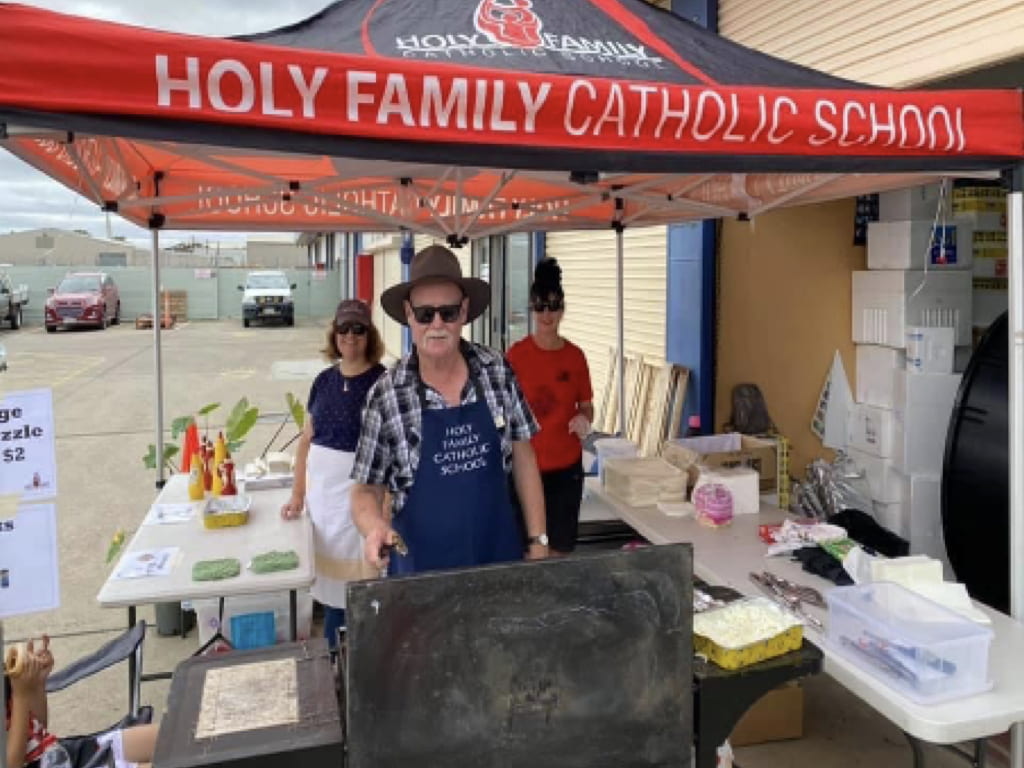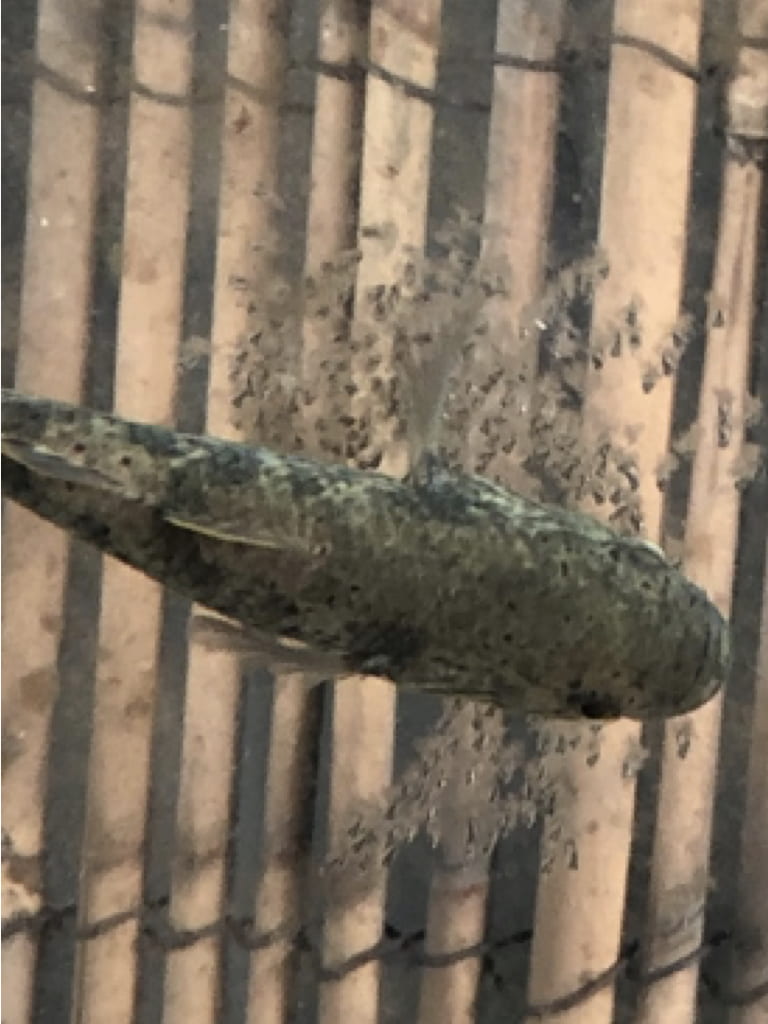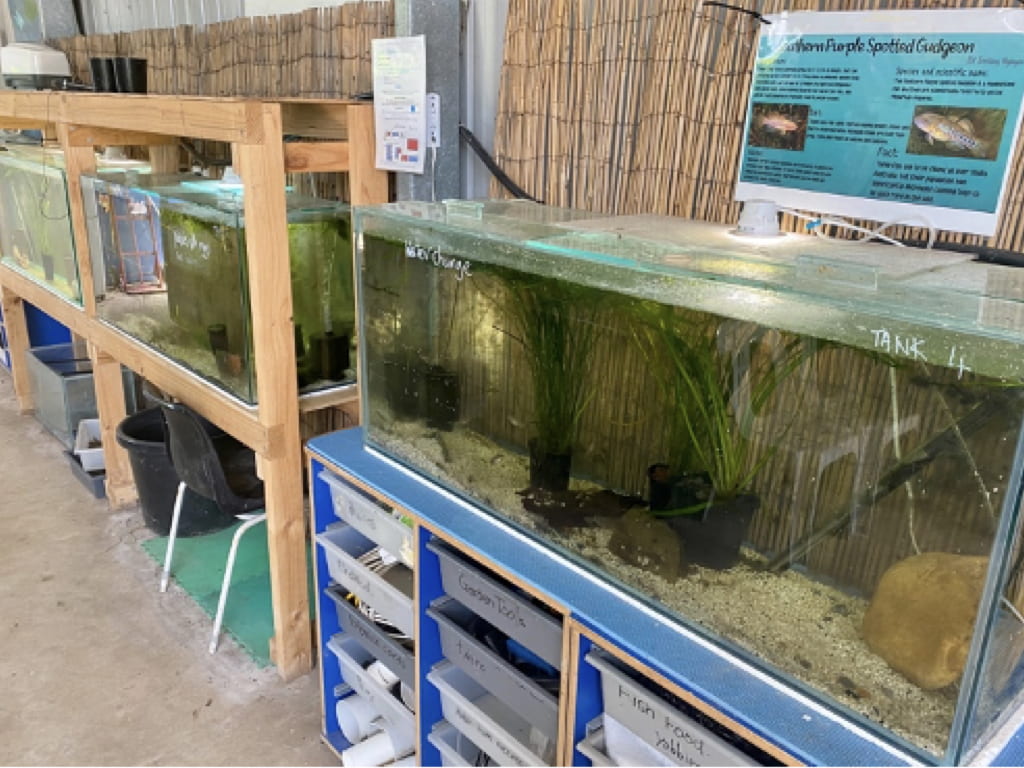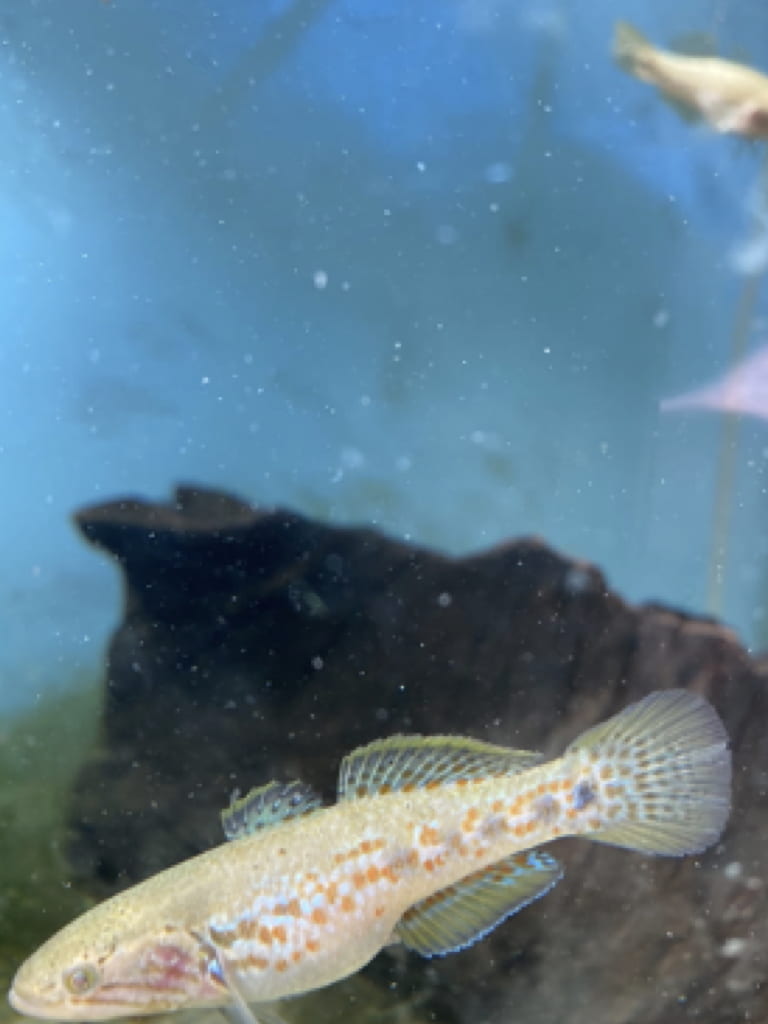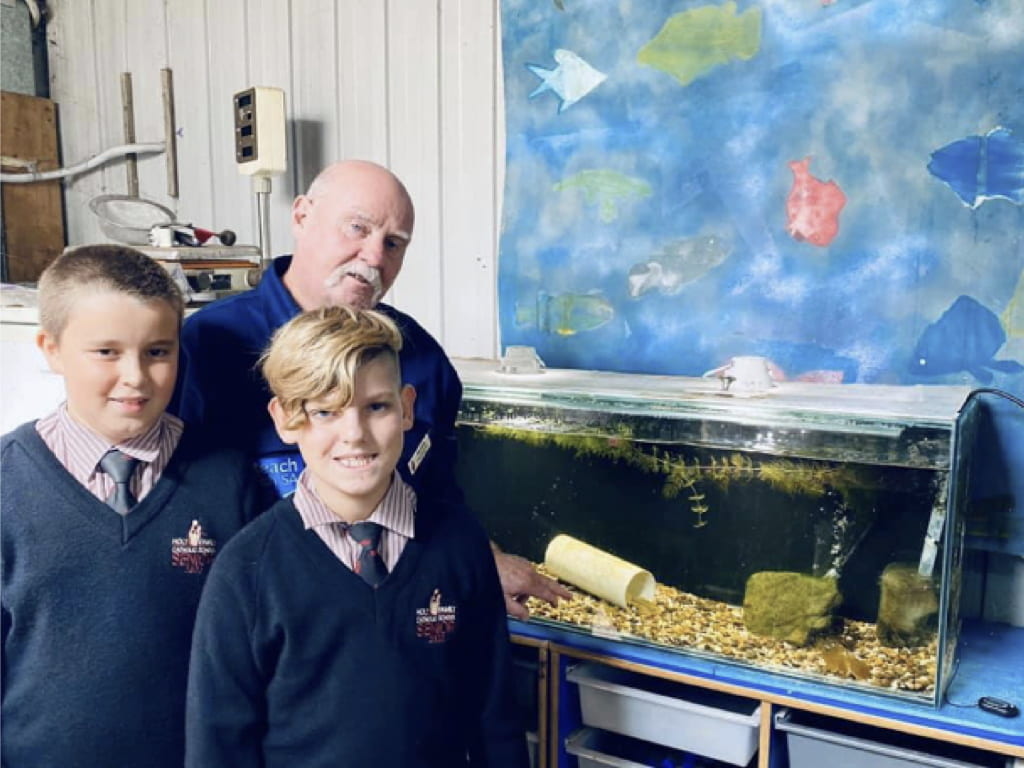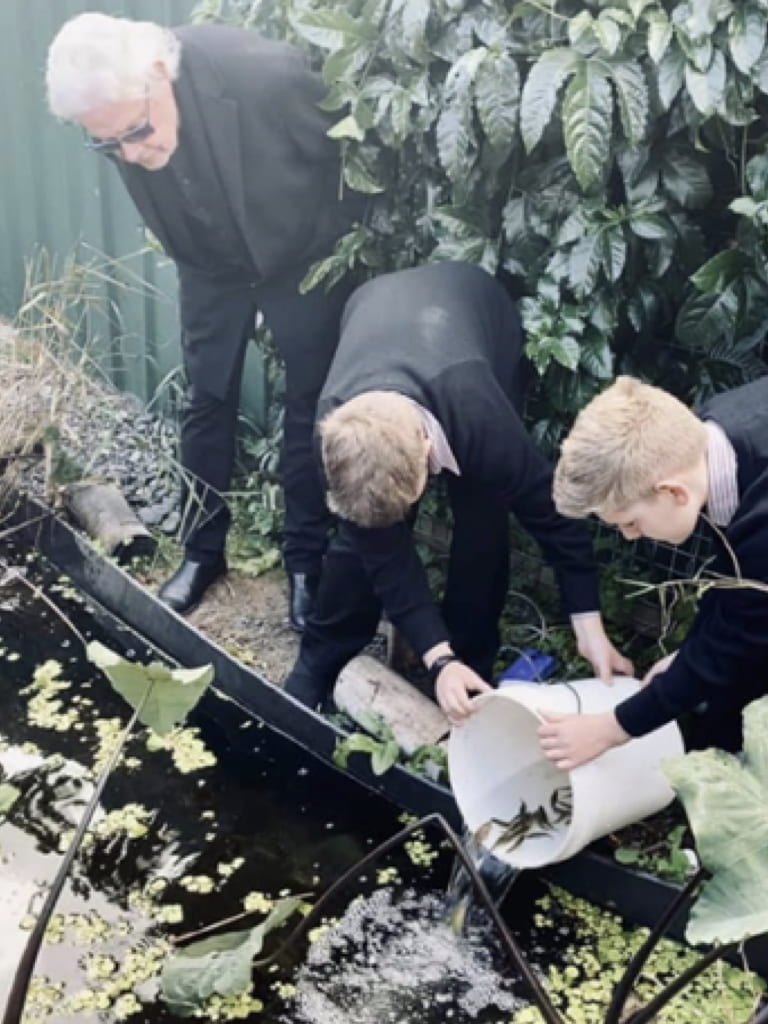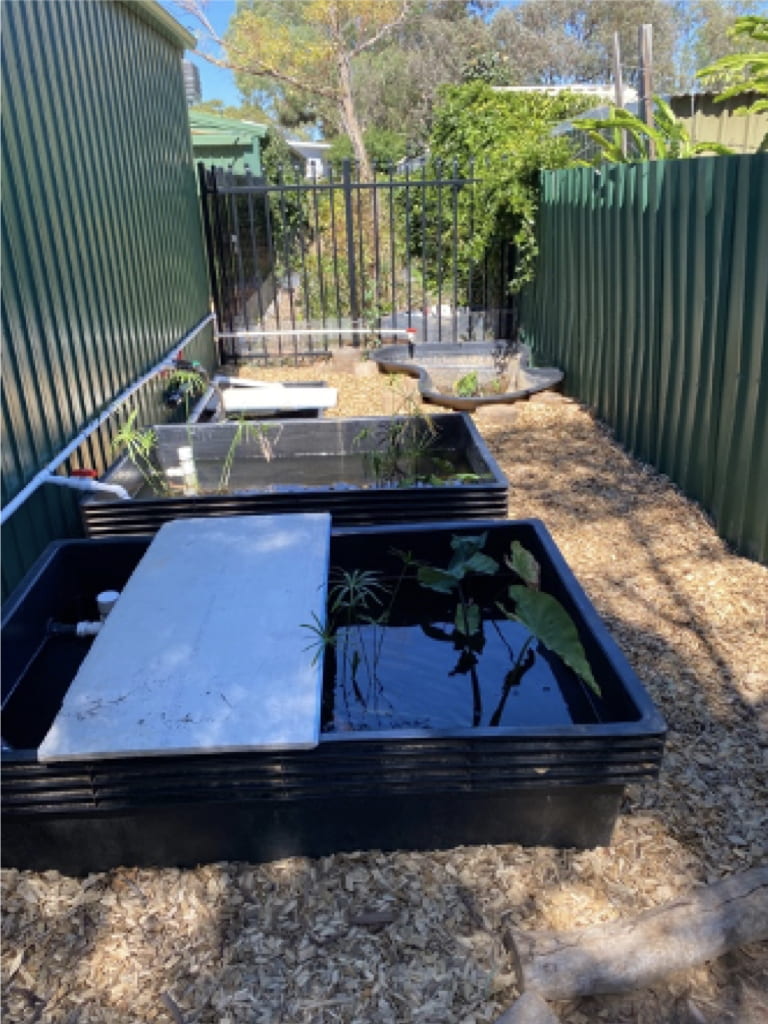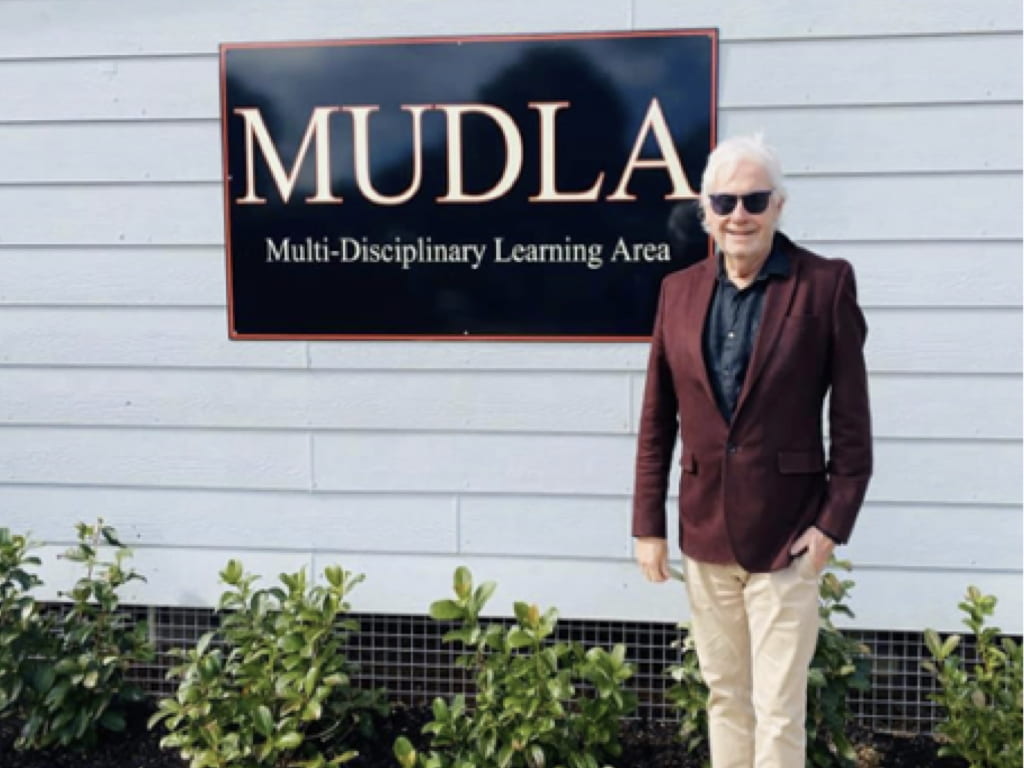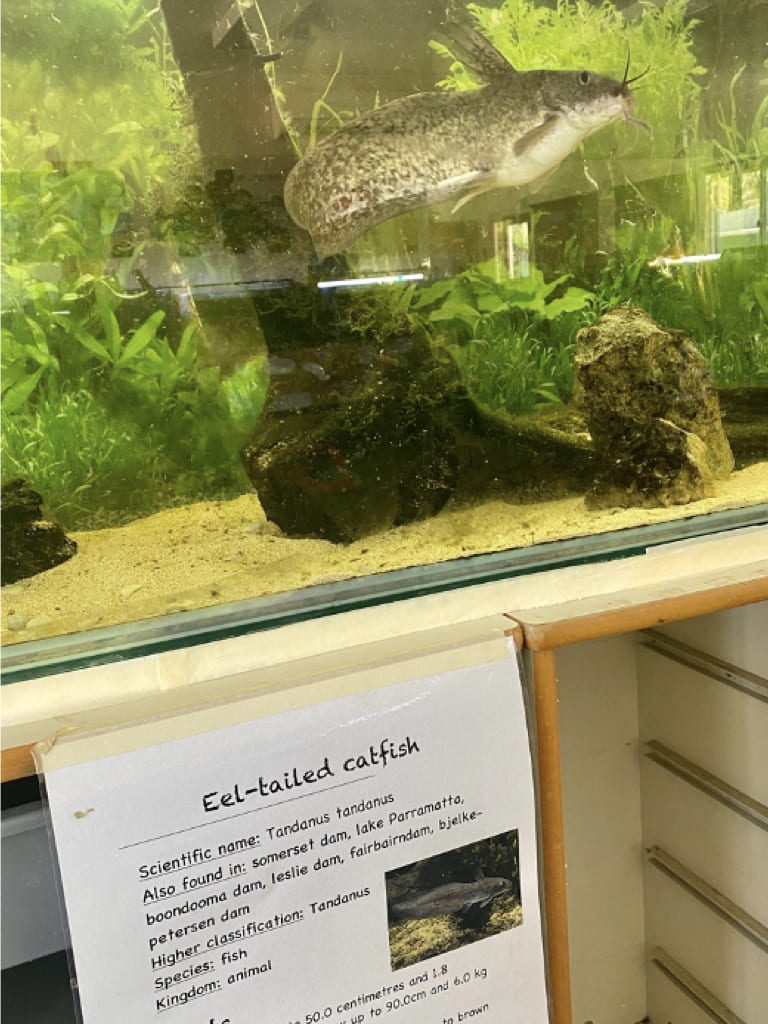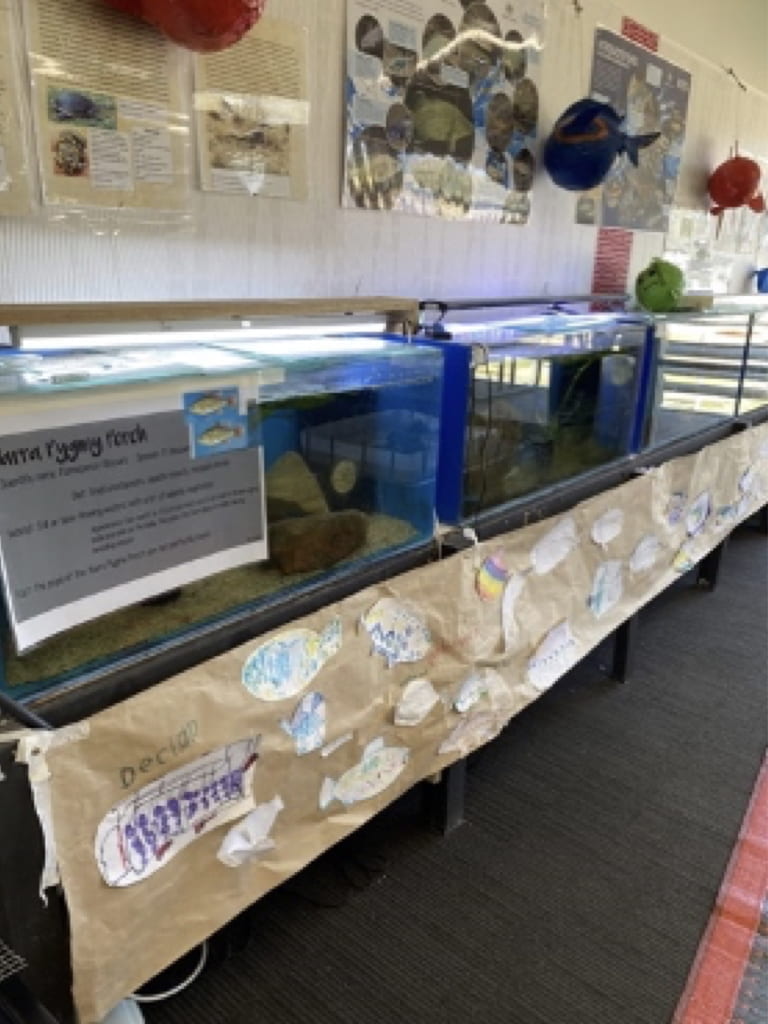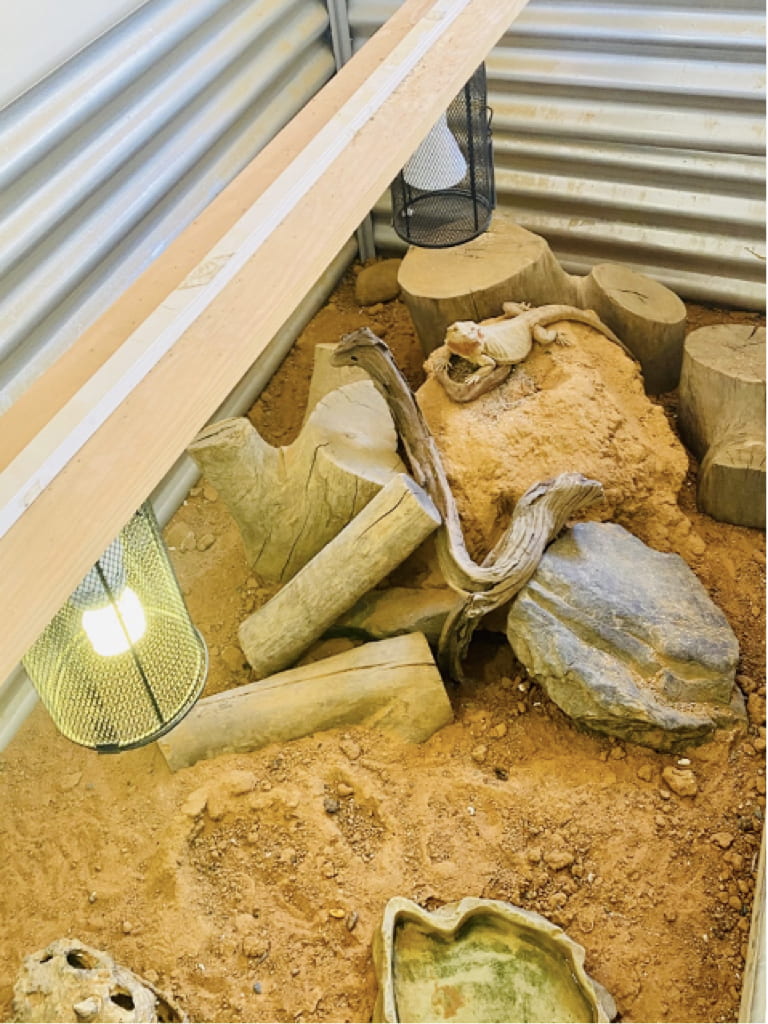Holy Family Fish Farm
Holy Family Catholic School’s Fish Farm is named KUYANGANI which in Kaurna language means ‘a place where fish gather’.
Holy Family is a place where learners gather. An integral part of our learning at Holy Family is creating a sense of Ecology and care for Mother Earth. We have created unique learning spaces for ecological inquiry. We have noticed that our children have an innate curiosity about the confluence of Science, Technology, Engineering and Mathematics (STEM). Our children lead their own learning about fish, aquaponics, water chemistry, biology and aquatic environments. This is how we address the Australian Curriculum (ACARA) within our learning.
At Holy Family we also have the MUDLA (Multi-Disciplinary Learning Area), which hosts a range of animals including bearded dragons, yabbies, turtles, frogs, hopping mice and fish for the students to look after and learn more about.
The narrative of the Holy Family Fish Farm ‘Kuyangani’
The idea of the Fish Farm stemmed from a time that the Principal, Mr Kerry White was fishing for barramundi with his son Isaac in Darwin. The conversation shifted to fish farming and Isaac, who was ten at the time, suggested that Kerry could do that at Holy Family.
In 2016, Kerry met his former Principal colleague Gerry McCarthy and they agreed to make the vision of a Fish Farm a reality.
In January 2017, the Fish Farm was formed as a microcosm in the school’s green shed. The Fish Farm first opened with 4 shaped ponds ready to accommodate aquatic creatures. In addition to this, a large fish breeding tank was also installed. The Holy Family students worked to construct and install the ponds and tanks.
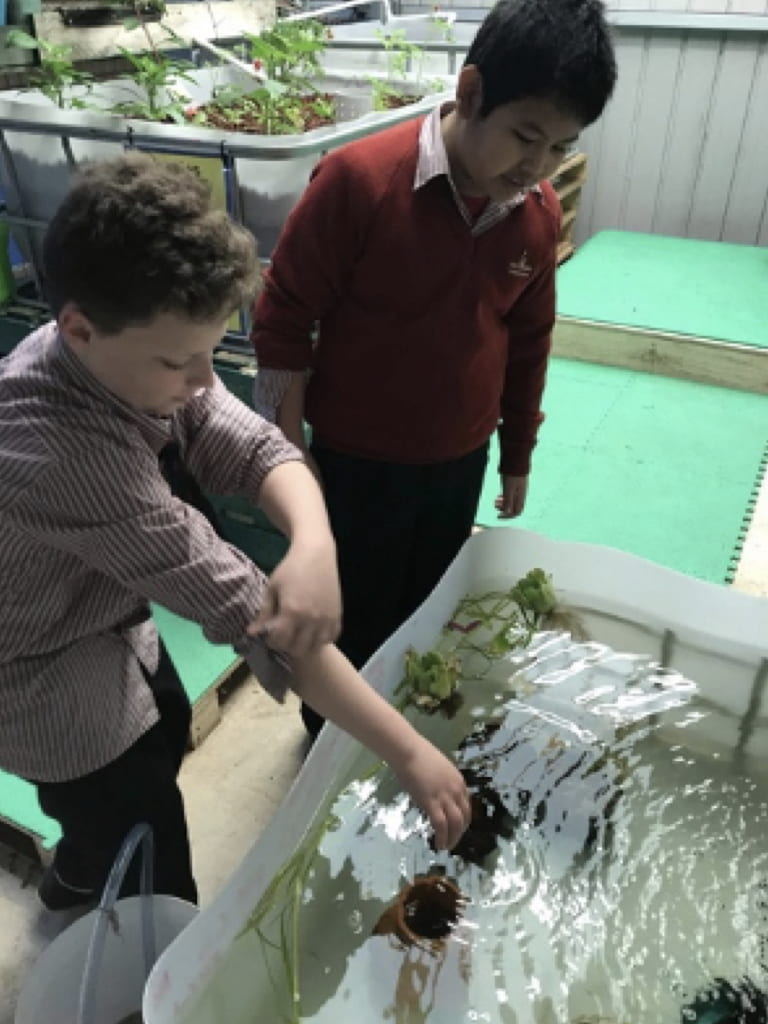
In March 2017, after testing water quality, species of yabbies and barramundi were introduced into the Fish Farm with great success. Our classes were able to use the space to learn more about the aquatic animals. The Playgroup families visited with much delight.
In April 2017, species of silver perch, gold fish, Murray cod and catfish were introduced to the ponds in the Fish Farm. The pods and sumps were built to ensure the aquatic animals have optimal habitats. Student groups were formed to work with Mr McCarthy to undertake regular water changes, water quality tests of pH levels and nitrates and setting up feed plans.
In June 2017, the Fish Farm was officially named ‘Kuyangani’ from the Kaurna language being from the original custodians of the land the school lies on. A student designed the logo that was fashioned into a sign that was placed on the Fish Farm.
In January 2018, the Kuyangani expanded with more tanks and aquariums constructed and used as habitats for the aquatic life. The project received a huge boost from the Commonwealth Bank Teaching Awards prize money which enabled us to make our long-term dream come true. High level student engagement and construction of the Fish Farm were visibly evident. Aquaponics has flourished since the roof sheets were changed to increase the light provided to the space.
Everyone loves the concept of the Fish Farm and everyone loves to interact with the fish, amphibians, reptiles and mammals. It is truly a ‘learning hook’ which leads inexorably to children engaging in STEM almost without realising it.
Thank you Commonwealth Bank and Schools Plus!
In April 2018, the canteen began to use produce from the Kuyangani Fish Farm garden to provide for recess and lunch. All classes were equipped with aquariums to house fish.
In July 2018, the School started offering Fish Farm produce including beetroot, tomato, mint, spinach and parsley to families.
In September 2018, the School attained a grant to provide opportunities for children to learn more about fish and fishing. The Upper Primary classes went on camp to Illawonga on the Murray River to learn about aquatic environments and species.
In October 2018, the Principal, Kerry White is awarded a grant to continue the work with students developing ecological awareness through learning undertaken at the Fish Farm. Kerry was interviewed by the local newspaper sharing that the Fish Farm is important in allowing children to realise they have an active responsibility to contribute to the sustainable use of the world’s resources.
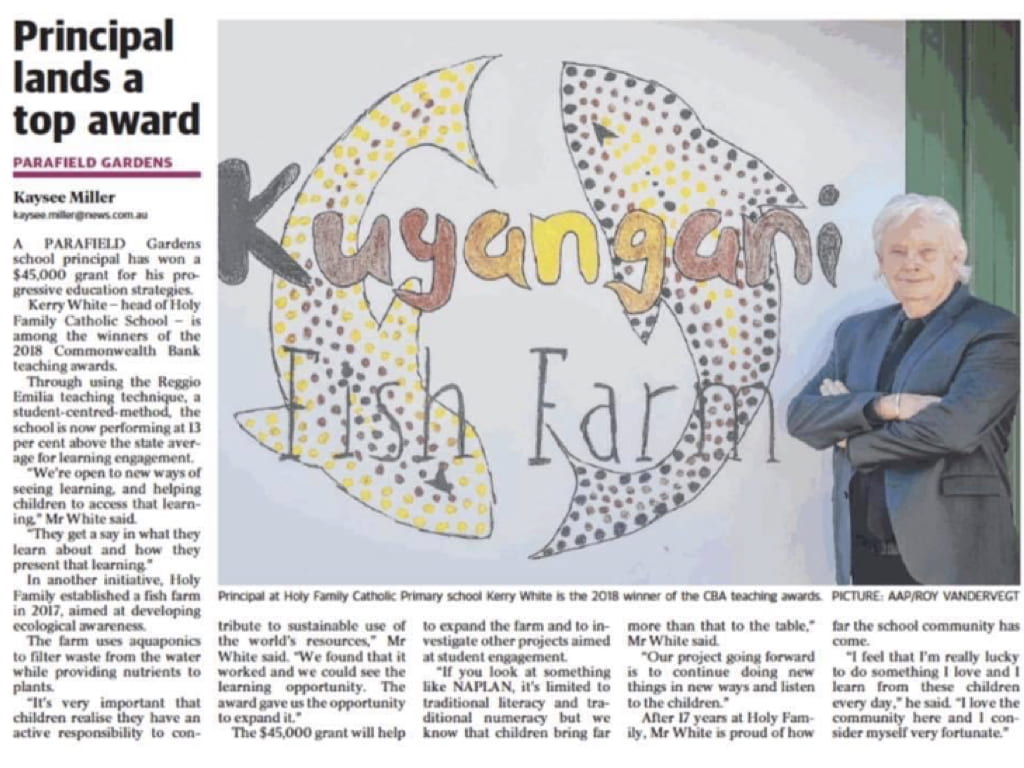
In November 2018, a group of students and teacher shared the learning and story of Kuyangani as a showcase at the Adelaide Convention Centre STEM workshop.
In January 2019, turtles were introduced into the Fish Farm which provided deeper learning on feeding cycles and optimal aquatic living environments.
In April 2019, the Barramundi Project progressed with all fish growing and flourishing in the bigger tanks. Classes enjoyed undertaking water testing, feeding, documenting and sharing information on the fish.
In June 2019, the School hosted a visit from Minister David Speirs where the students led him on a tour of the ecological spaces and environments.
In July 2019, a student created an advertisement as an inquiry for the Kuyangani Fish Farm.
In August 2019, a new aquarium for a diverse range of smaller fish including neon tetras was constructed in the ‘Think Tank’ learning space.
In January 2020, Holy Family received a grant from Communities Environment Program through the Federal Member for Makin, Tony Zappia. This grant assisted the school in beginning and maintaining the Silver Perch Breeding and Releasing Projects.
In February 2020, the School assisted at a fundraiser for Aggie’s Aquariums to raise money for the Kuyangani Fish Farm developments. Parents and Staff helped out.
In March 2020, In addition to this the school’s number of silver perch fish have rapidly increased, with student involved in the transition of tanks to accommodate increasing numbers.
In April 2020, the School connected with Dr Sylvia Zukowski, an Aquatic Ecologist to assist the initiation of a project at the school to house and breed critically endangered species. This supported the ecological and sustainability focus of the school. The key project focussed on increasing the species numbers of the critically endangered Southern Purple Spotted Gudgeon.
In May 2020, the first group of Southern Purple Spotted Gudgeon were introduced into the tanks. The school also started a project to increase the species numbers of the Yarra Pygmy Perch and the Southern Pygmy Perch. These fish were released into the new outdoor pond.
In June 2020, the Commonwealth Community Grant enabled the school to create a new pond area to house the increasing numbers of Yarra Pygmy Perch and Southern Pygmy Perch.
In July 2020, the Multi-Disciplinary Learning Area (MUDLA) was relocated to the eastern side of the school oval. The space was opened as a flexible learning spaces for children to learn more about reptiles, fish, amphibians and small mammals.
In 2021, as the new “Curiosity” building is taking shape, so are the Billabongs in the MUDLA precinct to accomodate our burgeoning purple spotted gudgeon population. We are expecting both projects to be fully operational by May.
Beginning of 2022
The emergence of the Billabong Precinct in the Learning Village which is Holy Family Catholic School. The billabongs start to take shape in an overnight rain storm showing the perfect kidney shape of each water space.
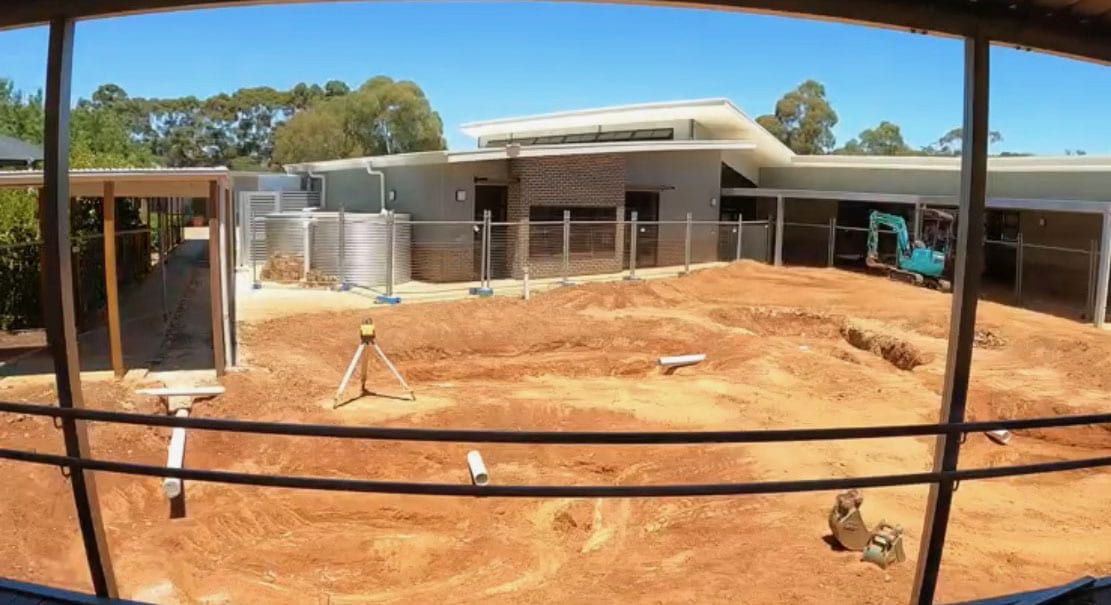
Today the children starting planting out the Billabong precinct with wetlands greenery such as reeds and water based plants. This is an awesome experience which will stay with them as a lifelong memory.
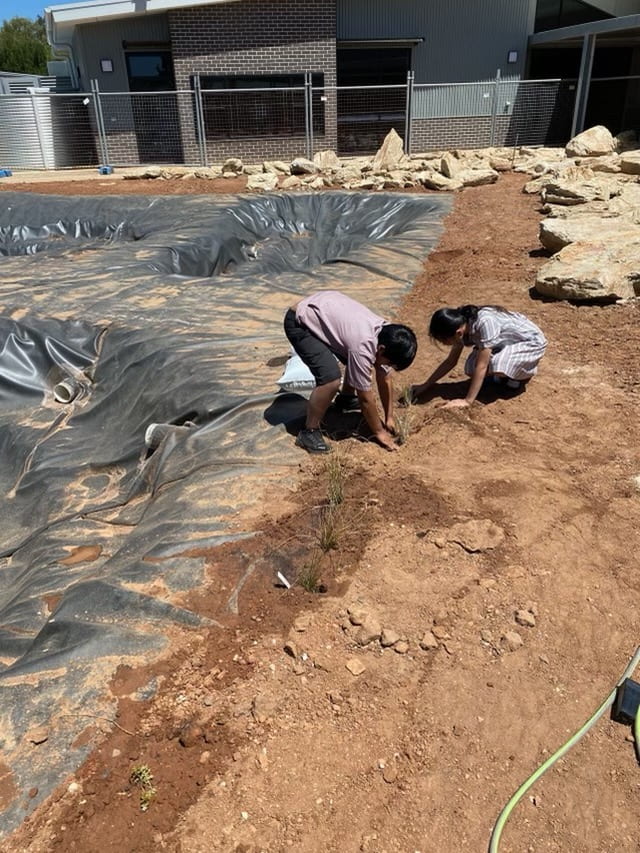
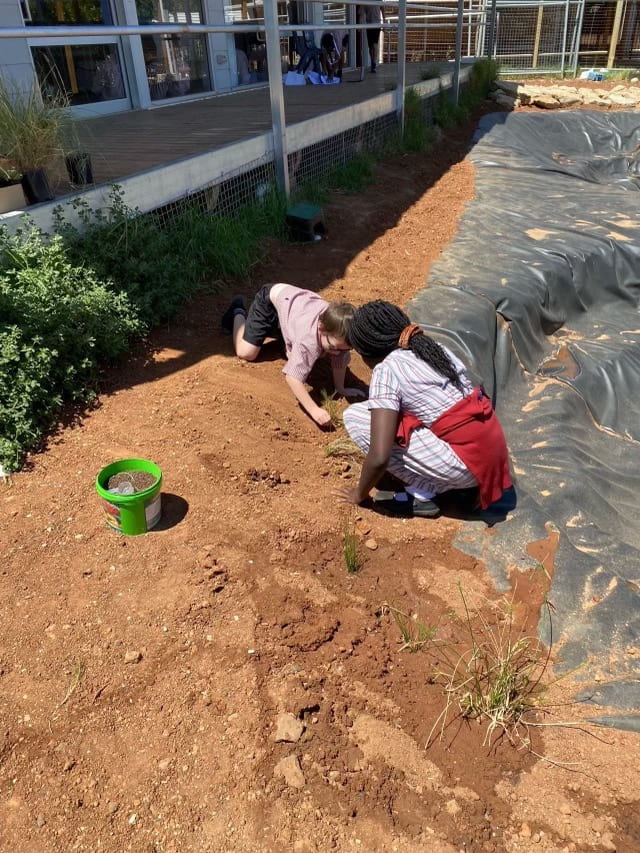
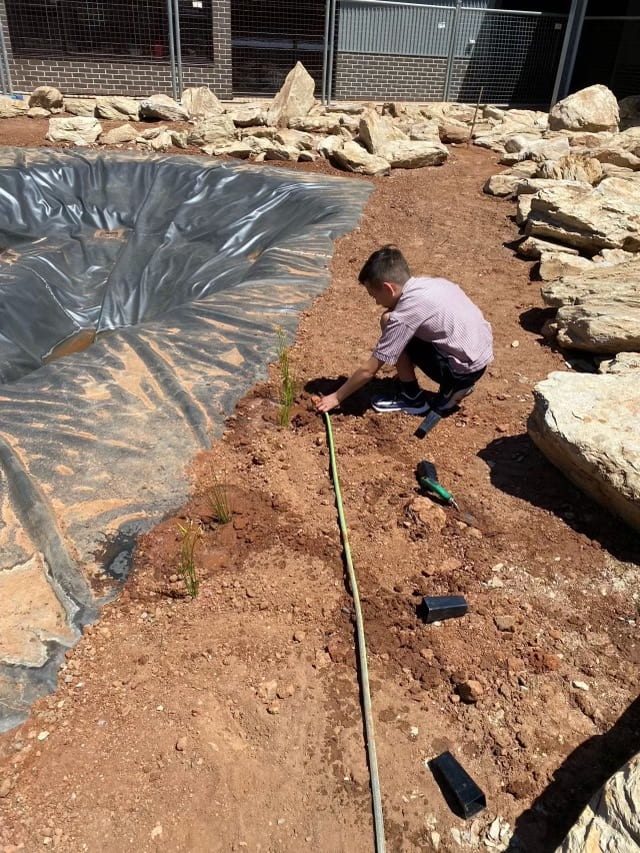
The Billabong Project experienced a seminal point when a group of students travelled to a waterway in the Murray Bridge area to release a small group of Southern Purple Spotted Gudgeon into the wild. We had bred these fish and we love them dearly. It was instructive for us to see a natural waterway in which this species of fish and other similar species including flat headed gudgeon cohabitate. This body of water is a ‘holding area’ similar to the Billabongs we are constructing. Deep questions and deeper understandings emanated from this field trip.
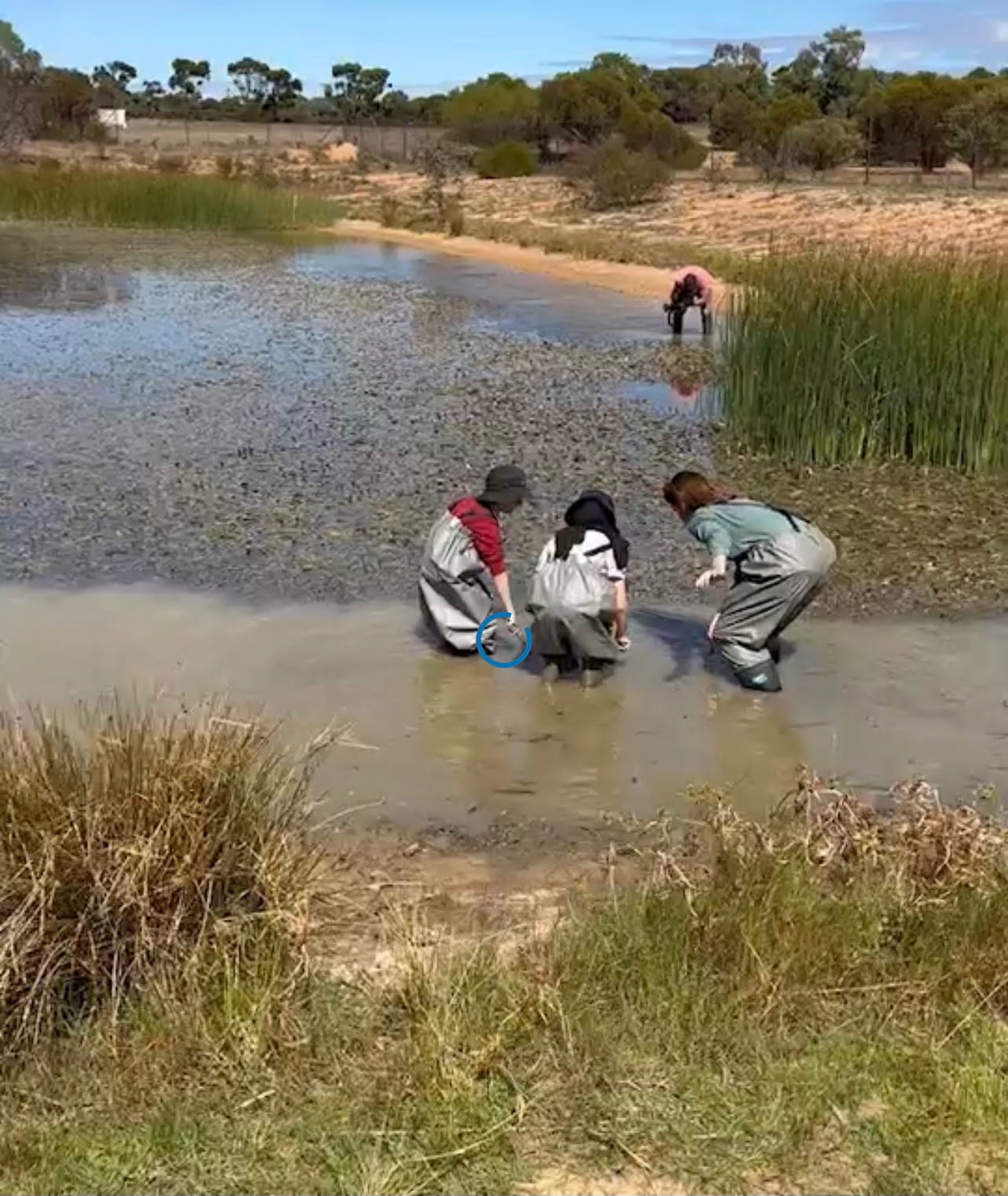
In June of 2022 our ecological story was aired on ABC TV Landline. The narrative shared the school’s special relationship with Southern Purple Spotted Gudgeon from birth to release in the wild. Filmed on location near Murray Bridge and at Holy Family Catholic School. This is the beginning of a narrative about our response to the assertion by David Attenborough that “ It’s surely our responsibility to do everything in our power to create a planet that provides a home not just for us, but for all life on Earth”. As Pope Francis expresses it in his Encyclical Letter Laudato Si’ : Our Care for Our Common Home. This learning to care for God’s creation is very important to us all.
